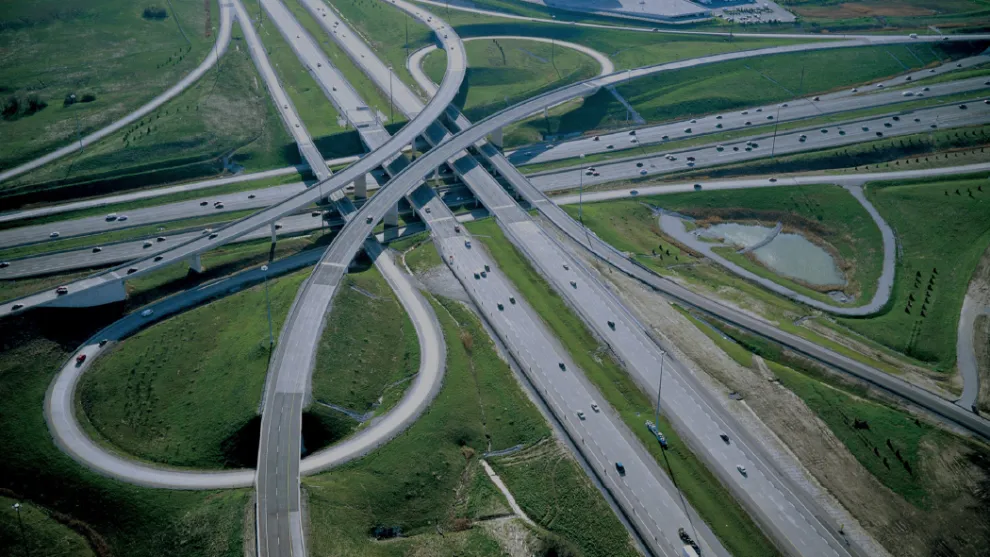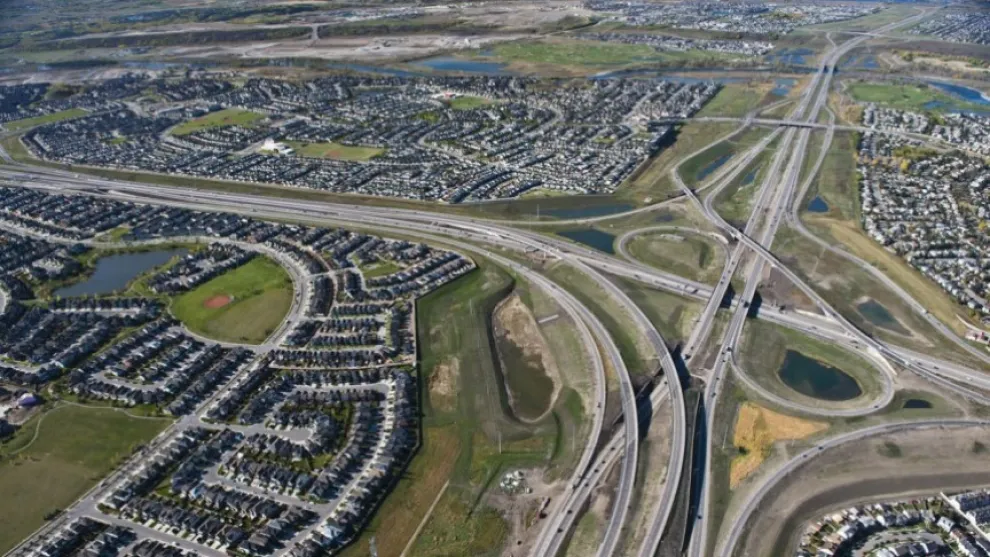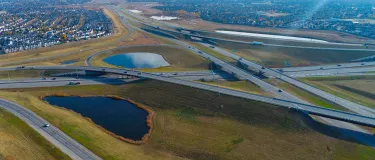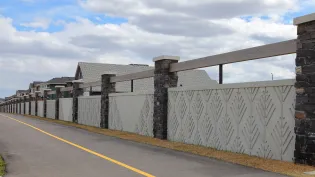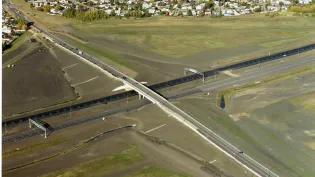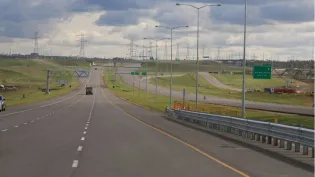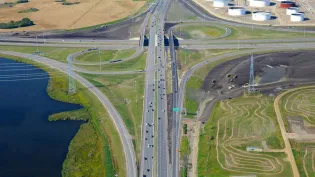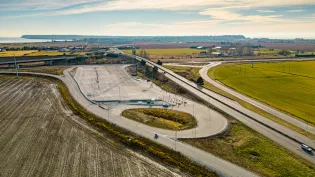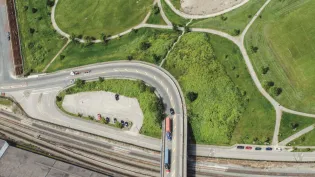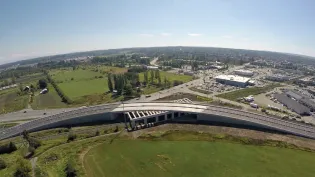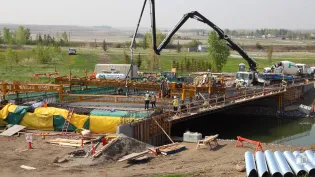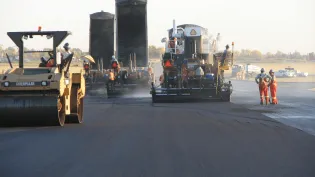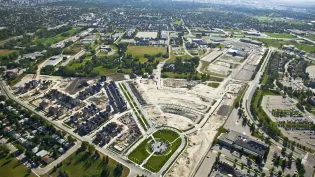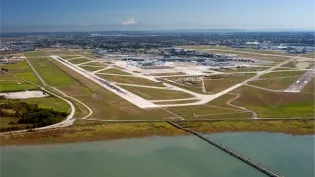Transforming Calgary's Landscape: Southeast Stoney Trail Ring Road Project
Are you looking for similar expertise for your project?
Lafarge was the dedicated road contractor responsible for all surface works on this ambitious Southeast Stoney Trail Ring Road (SEST) project in Calgary. The project involved the construction of approximately 25 kilometres of a six-lane divided highway.
The final completion included the development of basic and auxiliary lanes, nine interchanges, 27 bridge structures, one road flyover, two rail flyovers, and additional pre-grading for future interchanges.
THE CHALLENGE
When the Stoney Trail project was initiated, it stood as the largest single highway project in Alberta's history. The project's total value was estimated at $769,000,000 and covered an area with a daily traffic average of 41,000 vehicles.
The core challenge for the Alberta government was finding the right company to serve as a dedicated road contractor for this development, which was a difficult task. The mission was twofold: identify the ideal contractor for this immense project and ensure expertise in key areas:
- Collaborative scheduling
- Optimized resource allocation
- Quality assurance
- Health and Safety planning
- Communication management with stakeholders
The project also carried additional complexities, demanding meticulous planning, management, and execution:
- Managing high-volume urban traffic areas
- Integration of staging and traffic flows
- Establishing effective closure techniques
- Maintaining trade corridor access
- Consistent public engagement
THE SOLUTION
Lafarge has worked with the provincial governments on several projects and has a history of excellent project management. However, SEST required a much larger scale of operations, necessitating unique strategy development and project management.
SCOPE
Lafarge oversaw the earthworks, aggregate production and placement, asphalt paving, concrete curb and gutter, sidewalk, detour construction, and environmental mitigation shallow utility installation.
The subgrade scope of SEST involved the preparation of 1.8 million m3 of subgrade and the delivery and placement of 2.3 million tonnes of base aggregates. The subgrade interface was critical to the structure of the highway. The embankments were constructed from high plastic clays and required careful detail in placement to meet the moisture and compaction requirements.
The aggregates were delivered and placed in 2.5 years, requiring detailed schedules and logistic plans. At any given time, there were between 7 and 12 crews putting aggregates and up to 120 trucks hauling. Additionally, Lafarge supplied and placed 650,000 tonnes of asphalt and 7,000 cubic meters of ready-mix concrete.
Value of Scope of Work
$100,000,000+
Quality Management and Value Generation
Quality control services for the project were integral, encompassingasphalt and gravel material testing, compaction and thickness, and construction testing. The team performed geometric quality control and 3D Machine Control, increasing productivity and allowing for more complex designs to be completed confidently.
Lafarge used a state-of-the-art Level 1 inertial profiler to measure surface smoothness in two dimensions, longitudinally and latitudinally, to ensure proper cross-section slope and longitudinal profile. The profile graph reduced the need for coordination with third-party consultants.
A design quantity-based price was provided to control the cost and scope of the project, benefiting the joint venture team with cost certainty for asphalt concrete paving (ACP) and granular base course (GBC).
Resource Positioning and Partnerships
Lafarge was responsible for all aspects of surface construction, including all performance criteria. As a local contractor, the company had extensive knowledge of and experience with local products, suppliers, and construction methods, allowing it to control the surfacing effectively.
The team paved ramps, approaches, and bridge decks and completed all GBC and ACP work for this project, including full-depth construction, repairs, and overlay work. They also coordinated trucking, milling, and other subcontractors and, in turn, worked very tightly with the joint venture partners to ensure the work was completed safely and on time.
Continuous paving strategies (e.g. night paving, streamlined delivery) and additional construction resources from Lafarge's other Western Canadian operations played a critical role in the delivery scheduling process. This included providing as many as six paving crews to meet the traffic availability timeline. Lafarge was also closely integrated with the earthworks team for the project and helped the grading process by providing GPS equipment.
Lafarge supplied and provided laydown services for the highway granular base course. The project team also supported traffic control to limit the impact on the travelling public.
THE RESULT
The project was a success, and Lafarge was credited as a strong performer and instrumental in achieving the traffic availability date. The Ring Road is anticipated to have a traffic volume of 80,000 – 100,000 in the next 30 years, so Lafarge's work on SEST will continue to benefit commuters and trade, cementing their status as a leading contractor in the road construction industry.
